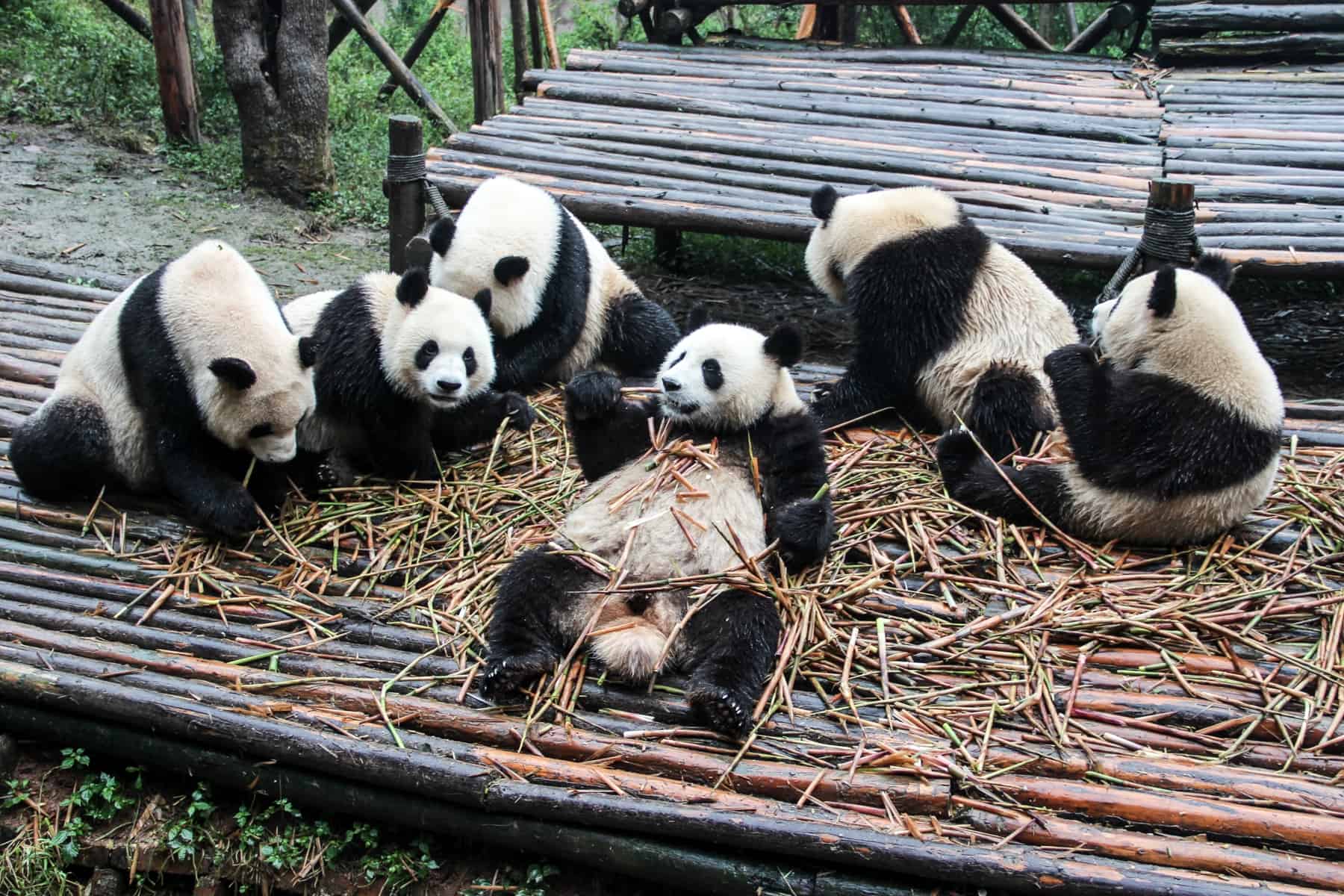What Makes Chengdu’s Panda Base a Wildlife Conservation Haven

Welcome to jusha.travel, your trusted guide to exploring the best of China’s culture, food, and unforgettable adventures. If you’re planning a Sichuan travel getaway, the Chengdu Research Base of Giant Panda Breeding is an absolute must-visit. This innovative center stands out as a premier destination for animal encounters and immersive wildlife conservation efforts dedicated to protecting the giant pandas. Here, visitors get up close with these adorable bears, while learning about groundbreaking breeding and habitat programs. Let’s dive into what makes this sanctuary such a vital haven for pandas and why it’s a highlight for any China traveler.
A Comprehensive Approach to Wildlife Conservation

The Chengdu Panda Base exemplifies China’s commitment to wildlife conservation, serving as an “ecological demonstration project” for ex-situ conservation. Unlike in-situ efforts that protect animals in the wild, this base breeds giant pandas outside their natural habitats, replicating bamboo forests and forest-like environments to simulate wild settings. Established in 1987, it has grown into a multi-level landscape with secure habitats, mires, and forests that mirror Sichuan’s forests. This approach not only preserves the species but also supports research into reintroduction programs, like the Dujiangyan Panda Wilderness for pre-release training.
For Sichuan travel enthusiasts, visiting this base offers a cultural insight into China’s conservation ethos, rooted in ancient principles of harmony with nature. It’s a nod to the country’s environmental priorities, where technology meets tradition—think advanced monitoring systems paired with traditional Chinese landscaping. Practical tip: Plan your visit during spring or autumn for temperate weather and blooming landscapes. Tickets can be booked online to skip queues, and guided tours in English are available for deeper animal encounters.
World-Leading Breeding and Research Initiatives

At the heart of Chengdu’s wildlife conservation success is its giant panda breeding program, home to the world’s largest artificial population of these endangered bears. With over 215 pandas bred here by 2020, the base has cracked key reproductive challenges through breakthroughs in feeding, management, and genetics. Innovative techniques ensure healthier cubs and controlled populations, with each panda living in bespoke “villas” designed for welfare—tiny apartments for single adults and family units for mothers with newborns.
The center also conserves red pandas, the only other species here, highlighting its umbrella approach to wildlife conservation. Research labs investigate panda biology, genetics, and health, collaborating globally to build a genome bank for long-term survival. This scientific edge adds layers to your Sichuan travel experience; visitors can peek into hospitals and labs during tours. Fun fact: Chengdu’s program has helped increase wild panda populations from 1,000 in the 2000s to around 1,800 today. For animal encounters, opt for face-to-face sessions where you might witness pandas chowing on bamboo— a highlight of panda lover dreams.
Immersive Habitat Simulation and Visitor Experiences

Beyond research, the base excels at habitat simulation, using natural Sichuan terrain—rivers, mountains, and woods—to create semi-wild environments. This design teaches pandas survival skills like foraging and climbing, preparing them for reintroduction. Organized into sites like the Beihu Panda Park for education, Dujiangyan Puerto for research, and Longquanshan for overviews, it integrates with Chengdu’s urban fabric via green corridors and public transit.
As an umbrella species, pandas’ protection benefits countless wildlife sharing bamboo habitats. For travelers, this means rich Sichuan travel stories: Imagine strolling trails where pandas roam freely in groups. The base welcomes nearly 12 million visitors annually, using revenue for conservation. Persistent tips: Use the app for virtual tours pre-visit, and try local Sichuan specialties nearby for a food-culture combo. Animal encounters here foster empathy—seeing pandas play might make you an instant conservation advocate.
Education, Tourism, and Cultural Integration

Public engagement defines Chengdu’s panda haven, with education programs celebrating awareness days like Earth Day. As a AAAA-rated site and United Nations awardee, it blends tourism with science, offering immersive exhibits on ecology and habitat protection. This makes it more than a zoo—it’s a cultural hub teaching about China’s biodiversity crisis and solutions.
For Sichuan travel, volunteering opportunities let you join care teams or presentations, deepening your connection. Respect local customs, like not photographing feeding sessions, and appreciate the center’s role in Chengdu’s identity. A peek into modern China: QR codes and apps enhance experiences, marrying tradition with tech. For culinary intertwine, pair visits with Chengdu’s spicy hotpot—panda bamboo isn’t on the menu, but it’s a fun parallel!
Future Challenges and Global Impact

Despite successes, challenges persist: Only 1,800 wild pandas remain, demanding adaptive management for genetics and disease control. Urban expansion requires green buffers, yet expansion plans connect to the Giant Panda National Park. Global efforts, including the Belt and Road, extend collaborations.
This base embodies sustainable tourism, proving conservation can attract millions while protecting species. For adventurers, Sichuan travel here inspires lifelong reverence for nature. Useful hack: Visit early mornings for quieter animal encounters. Extend your trip? Explore Chengdu’s temples or hot springs for holistic cultural immersion.
Conclusion

In summary, Chengdu’s Panda Base is a beacon of wildlife conservation, blending scientific innovation, habitat excellence, and global outreach to safeguard giant pandas. Through breeding breakthroughs, simulated environments, and engaging education, it offers transformative animal encounters that enrich any Sichuan travel itinerary. Here at jusha.travel, we love sharing these hidden gems to make your China journey unforgettable.
Ready for more explorations? Share your panda encounters in the comments below! For extended reading, check out our posts on [IShowSpeed’s Third Day Chengdu Adventure: Pandas, Spice, and Chaos Unleashed](https://jusha.travel/ishowspeeds-third-day-chengdu-adventure-pandas-spice-and-chaos-unleashed) for Sichuan insights, or explore [Top 10 Must-Visit Cities in China for 2025 Adventures](https://jusha.travel/top-10-must-visit-cities-in-china-for-2025-adventures) for broader China travel. Visit jusha.travel for more inspiration on culture, food, and technology in the Middle Kingdom!

